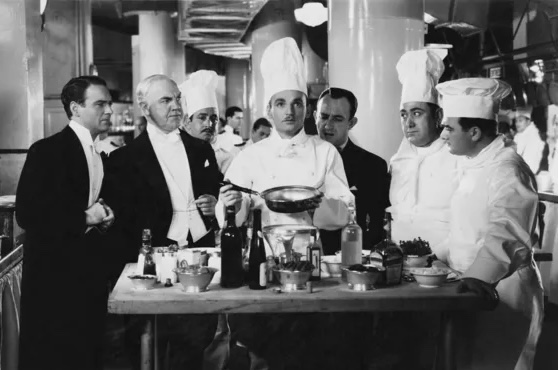I wish I had a dollar for every time as a waiter that a customer asked for something that wasn’t on the menu. The request usually starts with an innocuous “Could the chef make me …” and ends with some absurd bespoke pasta recipe with ingredients culled from various other menu items. I would never dare say no outright, knowing they would immediately point to the menu and insist that if the kitchen has those ingredients on hand, then they should be able to make their invented dish.
Good waiters learn to be diplomatic. But the truth is in most fine dining restaurants, kitchen rules aren’t made to be broken, and the staff knows that certain requests can’t be accommodated. So we say we’ll ask the chef if it’s possible, disappear behind the curtain without even bothering to ask (because we already know the answer), and return to the table with an apologetic but emphatic “no.”
What these customers never seem to understand is that food in a restaurant isn’t prepared the way it is someone’s home kitchen. A restaurant kitchen is an assembly line built for rapid and consistent food production. Most of the prep work in a high-volume restaurant is done in advance, so that during service cooks can prepare and compose a variety of dishes as quickly and efficiently as possible. Today, as margins tighten and food costs rise, menu ingredients need to be more carefully portioned than ever.
The kitchen prepares a “mise en place” –– loosely translated in French to mean “putting in place” –– a neatly organized template of easily reachable ingredients in front of every cook designed to expedite the cooking process. The rigid division of labor in a kitchen brigade means that any disruption of normal operation can throw things out of whack. There are often multiple cooks involved in preparing different elements of individual dishes. In order to deliver consistent food, each of their tasks must be orchestrated seamlessly. Timing is everything.
Since chefs don’t want to risk the machine breaking down, they’re often unyielding about allowing guests to stray from the script. It isn’t because they don’t want to make people happy; it’s because they know if they let one person change the menu, then everyone gets to change the menu. A restaurant kitchen can’t function properly if it can’t enforce reasonable bylaws.
It isn’t because they don’t want to make people happy; it’s because they know if they let one person change the menu, then everyone gets to change the menu.
Let say someone wants to add mushrooms and spinach to a pasta dish on the menu that doesn’t come with mushrooms or spinach. That person sees mushrooms and spinach printed on the menu in other places, so they assume it’s an easy request to accommodate. While it may be true that the kitchen has those ingredients, there’s a chance if it repeatedly uses them for non-menu items, like this fantasy pasta and others, that it may run out.
Some ingredients need to be parcooked in advance, so if the kitchen does run out of mushrooms, for example, it can be challenging to replace them in the middle of a busy night. There may be plenty of raw mushrooms in the walk-in fridge, but there isn’t time in the middle of a busy service to pull a cook off the line to clean, slice, sauté, and season more mushrooms while new orders continue pouring into the kitchen. By then, the prep cooks have all gone home.
Even something as simple as adding sliced tomatoes to a mixed green salad can cause havoc. If sliced tomatoes aren’t set in the mise en place, then to accommodate the request, someone has to leave the kitchen to search for a tomato, clean it, and slice it artfully for this special salad. The cook who leaves the line to grab tomatoes is jumping off a moving train, while the guest who makes a special request is like a straphanger standing between the subway doors while the train is leaving the station. It may possible for the kitchen to execute this single maneuver with minimal disruption, but now imagine that happening in a 200 seat restaurant with all sorts of different exotic requests all night long. Not so easy anymore.
This is why chefs say no so often. One special request isn’t a problem; special requests for an entire dining room of people at the same time is a recipe for disaster. The aggregate effect of allowing so many changes all at once makes it near impossible for the engine to run as smoothly as it should.
The argument against saying no has always been: “Chefs should want to make every customer happy.” The problem is that accommodating one guest’s special request may compromise someone else’s experience, especially the ones who play by the rules. It’s why everyone can’t have an 8 o’ clock reservation (no matter how much they beg for one) or why every party can’t be seated in the banquette table of their choice. Nothing in a restaurant happens in a vacuum.
Patrons need to be even more mindful of the herculean challenges restaurants face keeping clientele happy in today’s business climate. Kitchen crews are running leaner now with labor shortages and rising hourly wages. Inflation is crimping margins, and, as a result, systems need to be even more streamlined and efficient. So, unless you have very serious dietary restrictions, respecting the menu is a small sacrifice, and you should do your part to help keep the trains running on time.



